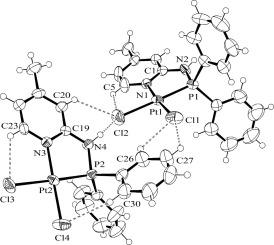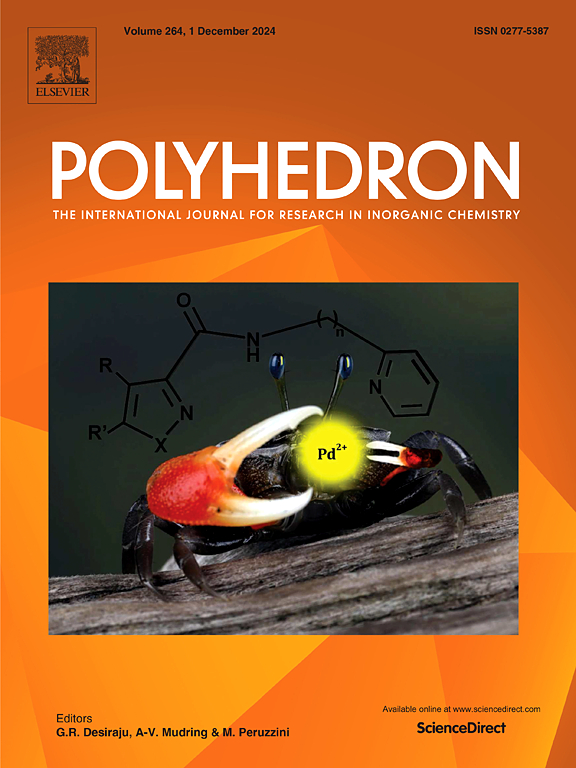Group 10B metal chlorides and chalcogenide derivatives of 2-(N-(diphenylphosphino)amino)-4-methylpyridine: Application of Pd(ΙΙ) derivative as pre-catalyst in the Suzuki cross-coupling reaction
IF 2.4
3区 化学
Q2 CHEMISTRY, INORGANIC & NUCLEAR
引用次数: 0
Abstract
Oxidation of 2-(N-(diphenylphosphino)amino)-4-methylpyridine (1) with elemental sulfur or gray selenium afforded the corresponding sulfide and selenide (4-CH3)C6H3N-2-NH(P(E)Ph2) [E=S(2), Se(3)], respectively. The reaction of 1 with group-10B metal chlorides afforded cis-MCl2[1-κ2P,Npy][M=Pd(4), Pt(5)], and the side product trans-PdCl2[(4-CH3)C6H3N-2-NH(P(O)Ph2)-κNpy]2 (6), respectively. Compounds 1–5 have been isolated and characterized by multinuclear NMR spectroscopy (1H, 13C, 31P NMR), infrared, and elemental analysis. Crystal-structure determinations were performed on 2, 5, and 6. The role of 4 as a pre-catalyst in the Suzuki cross-coupling reaction was additionally studied.

2-(N-(二苯基膦)氨基)-4-甲基吡啶的 10B 族金属氯化物和卤化物衍生物:Pd(ΙΙ)衍生物作为前催化剂在铃木交叉偶联反应中的应用
用元素硫或灰硒氧化 2-(N-(二苯基膦)氨基)-4-甲基吡啶(1),可分别得到相应的硫化物和硒化物(4-CH3)C6H3N-2-NH(P(E)Ph2) [E=S(2),Se(3)]。1 与第 10B 族金属氯化物反应,分别得到顺式-MCl2[1-κ2P,Npy][M=Pd(4), Pt(5)]和副产物反式-PdCl2[(4-CH3)C6H3N-2-NH(P(O)Ph2)-κNpy]2 (6)。化合物 1-5 已经分离出来,并通过多核核磁共振光谱(1H、13C、31P NMR)、红外线和元素分析进行了表征。对 2、5 和 6 进行了晶体结构测定。此外,还研究了 4 在铃木交叉偶联反应中作为前催化剂的作用。
本文章由计算机程序翻译,如有差异,请以英文原文为准。
求助全文
约1分钟内获得全文
求助全文
来源期刊

Polyhedron
化学-晶体学
CiteScore
4.90
自引率
7.70%
发文量
515
审稿时长
2 months
期刊介绍:
Polyhedron publishes original, fundamental, experimental and theoretical work of the highest quality in all the major areas of inorganic chemistry. This includes synthetic chemistry, coordination chemistry, organometallic chemistry, bioinorganic chemistry, and solid-state and materials chemistry.
Papers should be significant pieces of work, and all new compounds must be appropriately characterized. The inclusion of single-crystal X-ray structural data is strongly encouraged, but papers reporting only the X-ray structure determination of a single compound will usually not be considered. Papers on solid-state or materials chemistry will be expected to have a significant molecular chemistry component (such as the synthesis and characterization of the molecular precursors and/or a systematic study of the use of different precursors or reaction conditions) or demonstrate a cutting-edge application (for example inorganic materials for energy applications). Papers dealing only with stability constants are not considered.
 求助内容:
求助内容: 应助结果提醒方式:
应助结果提醒方式:


